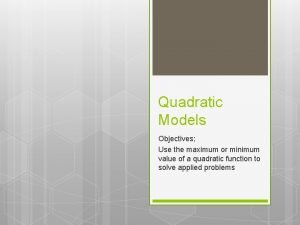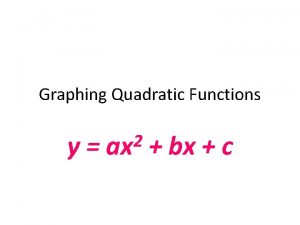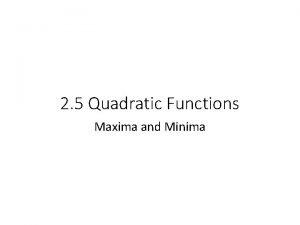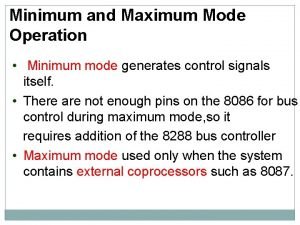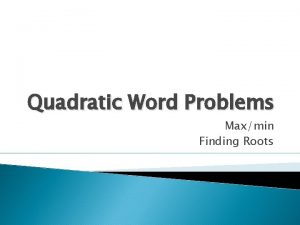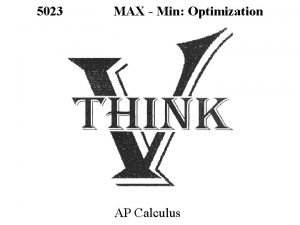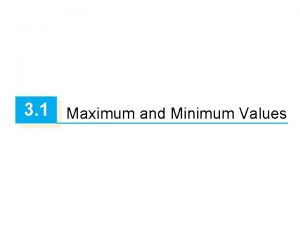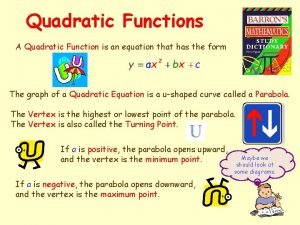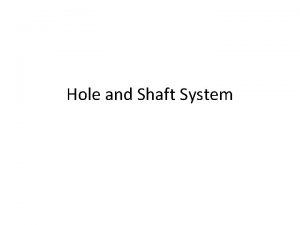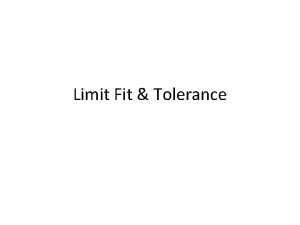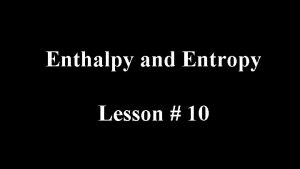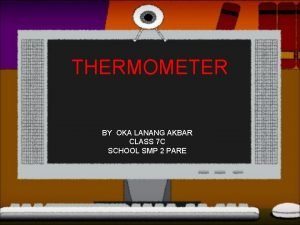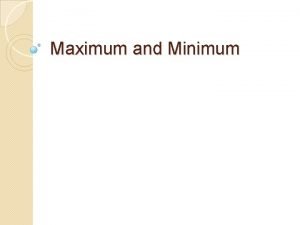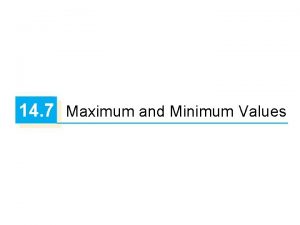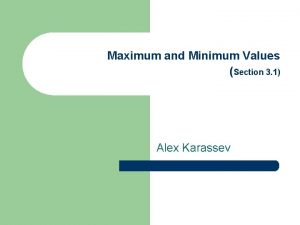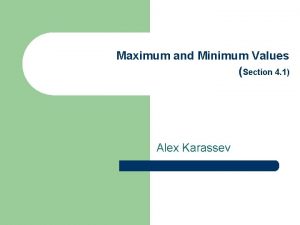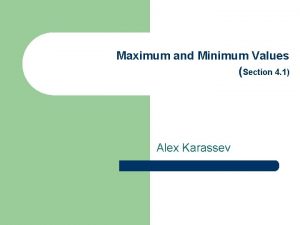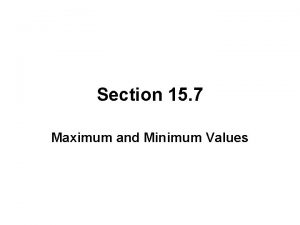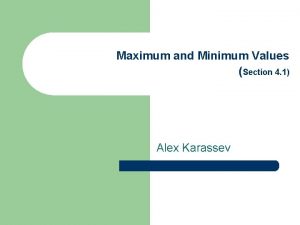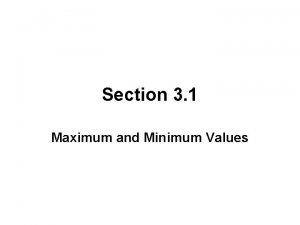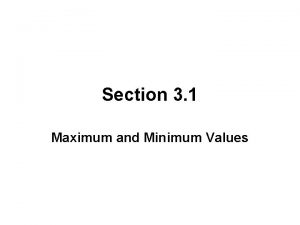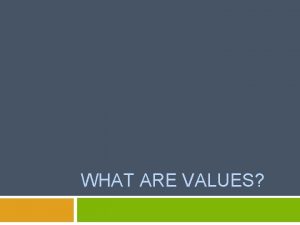Section 4 1 Maximum and Minimum Values AP













- Slides: 13

Section 4. 1 Maximum and Minimum Values AP Calculus October 20, 2009 Berkley High School, D 1 B 1 todd 1@toddfadoir. com Calculus, Section 4. 1

Max and Min n n Of course they can’t be too easy; this IS calculus. Absolute Maximum: f has an absolute maximum if there exists a c such that f(c)≥f(x), for x in D. f(c) is called the maximum value. Absolute Minimum: f has an absolute minimum if there exists a c such that f(c)≤f(x), for x in D. f(c) is called the minimum value. The absolute max and absolute min are called the extremes. Calculus, Section 4. 1 2

Max and Min n Local Maximum: f has a local maximum if there exists a c such that f(c)≥f(x), for all x near c. ¨ How n n close to c? Calculus close. Local Minimum: f has a local minimum if there exists a c such that f(c)≤f(x), for all x near c. Endpoints of closed intervals can not be local maximums or minimums. Calculus, Section 4. 1 3

Example Local Minimum and Absolute Minimum Local Maximum and Absolute Maximum Local Minimum Calculus, Section 4. 1 4

Example Local Minimums Local Minimum Local and Absolute Maximum Local Maximum Absolute Minimum Calculus, Section 4. 1 5

Example Local Maximum Local and Absolute Maximum Absolute Minimum Local Minimum Calculus, Section 4. 1 6

Critical Numbers n n n Definition: “A critical number of a function f is a number c in the domain of f such that either f’(c) = 0 or f’(c) does not exist. ” Theorem: “If f has a local maximum or minimum at c, then c is a critical number of f. ” Translation: Any critical number has the potential of being a local maximum of minimum. Only at critical numbers can a local max or a local min exist. Calculus, Section 4. 1 7

Example x=0 is a critical value, but not a local maximum or minimum Calculus, Section 4. 1 8

Example f(0)=0 is a local minimum. Because the derivative at 0 is undefined, 0 is a critical value. Calculus, Section 4. 1 9

Closed Interval Method To find the absolute maximum and minimum values of a continuous function f on a closed interval [a, b]: 1. Find the values of f at the critical numbers of f on (a, b) 2. Find the values of f at the endpoints of the interval. 3. The largest of the values for steps 1 & 2 is the absolute maximum value; the smallest of these values is the absolute minimum value. Calculus, Section 4. 1 10

Example Calculus, Section 4. 1 11

Example Absolute Minimum Absolute Maximum Calculus, Section 4. 1 12

Assignment n Section 4. 1, 15 -55, odd Calculus, Section 4. 1 13
 Local maximum
Local maximum Maximum and minimum values of quadratic functions
Maximum and minimum values of quadratic functions Ax2+bx+c graph
Ax2+bx+c graph How to find minimum of a quadratic function
How to find minimum of a quadratic function 8288 bus controller block diagram
8288 bus controller block diagram Max and min word problems
Max and min word problems Relative vs absolute max and min
Relative vs absolute max and min Maximum and minimum derivative
Maximum and minimum derivative Extreme value theorem
Extreme value theorem An example of a quadratic function
An example of a quadratic function Maximum clearance between hole and shaft
Maximum clearance between hole and shaft Maximum metal condition (mml) corresponds to the
Maximum metal condition (mml) corresponds to the Minimum enthalpy and maximum entropy
Minimum enthalpy and maximum entropy What is the use of maximum and minimum thermometer class 7
What is the use of maximum and minimum thermometer class 7

